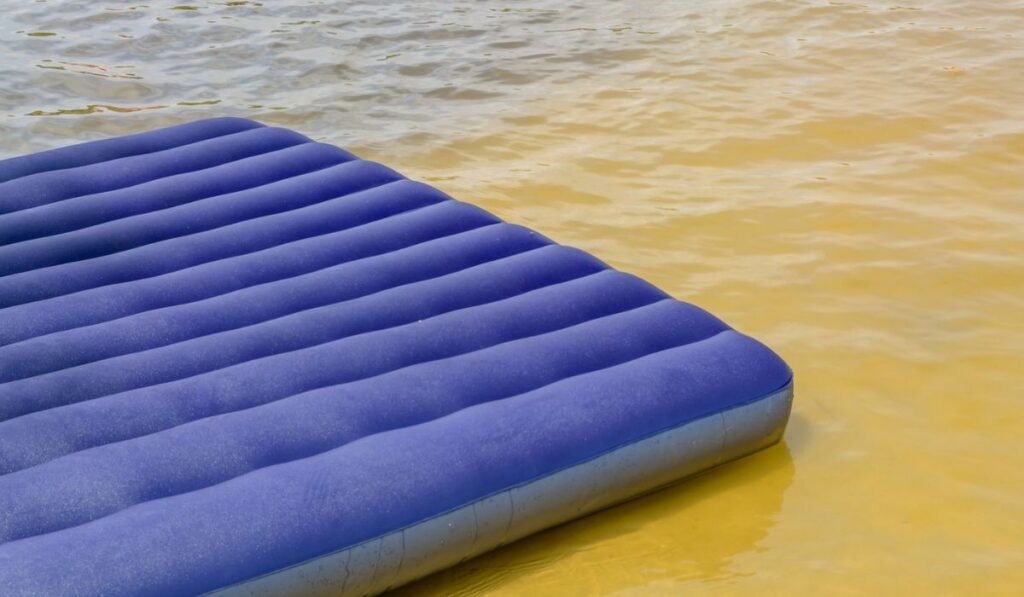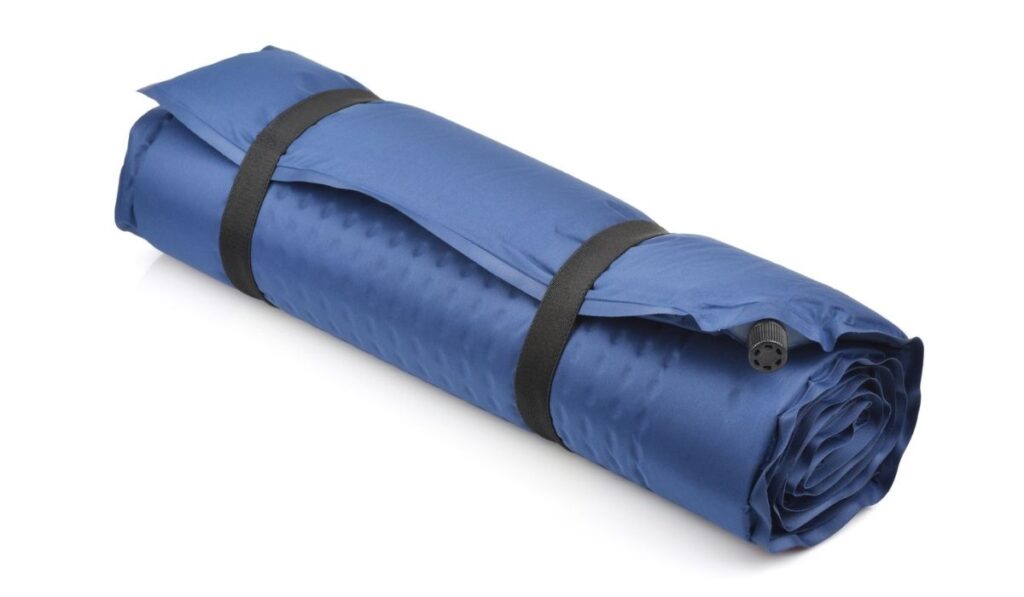An air mattress uses air chambers made of PVC or other types of plastic to provide support. The chambers are inflated using an air pump. And while you can adjust an air mattress to various degrees of firmness, a common question people have is whether you can fill one with water.
An air mattress is not designed to hold water, and doing so can cause the air chambers to rupture. Filling an air mattress with water will make it heavier and more challenging to move around. Furthermore, water promotes the growth of mold and mildew, which can ruin the mattress.
Don’t buy an air bed if you’re hoping to fill it with water! If you’re seeking a mattress that can be filled with water, you might want to consider a waterbed. They are specifically designed for that purpose. Let’s look at the difference between the two options and how to properly care for and use your air mattress.
What’s the Difference Between an Air Mattress and a Water Bed?

Most air beds are designed for temporary use, but some are made to be as durable as a spring coil mattress or a conventional foam mattress. Airbeds are intended to be rolled up and stored away when not used.
When selecting an air mattress (on Amazon), take into consideration how frequently you will be using it and for what purpose. For example, an airbed designed for occasional camping trips may not have the same durability as one that is meant to be used more frequently as a guest bed.
In contrast, waterbeds are generally more permanent fixtures in a home since they are often built into the bed frame and may require expert installation. They are also significantly heavier than airbeds, so keep that in mind if you plan on moving your bed around frequently.
Additionally, waterbeds require special care, such as regular draining and cleaning of the water to prevent the growth of bacteria. While waterbeds are with extra protection against punctures and tears, they should be laid on a flat surface and away from any sharp objects.
Can You Fill an Air Mattress With Water?
An airbed is not designed to be inflated with water, but it is possible. Still, inflating an air mattress with water has several drawbacks. First, water creates a different sleeping experience from the air, and filling an airbed with water may result in a suboptimal sleeping condition.
The seams of an air mattress also aren’t built to take up the weight of the water and may split open when you try to sit or lie down on the bed. Similarly, the inflating system isn’t designed to take in water and may break if you try to use it to pump water into the mattress.
Finally, filling an air mattress with water will make it heavier and more challenging to move around. Since the bed is made from lighter material, moving a water-filled mattress may cause it to rip.
Filling an airbed with water will undoubtedly result in an economic loss as you will have to replace it much sooner. If you need a mattress that can be filled with water, consider a waterbed instead.
What Should You Do If Your Air Mattress Gets Wet?
There are two common ways that an air mattress can get wet. The first is from humidity in the air, which can condense on the surface of the mattress when it’s cold.
The second is from sweat, which can happen when people sleep. Water on your airbed is not only a health concern, but it also can cause damage. Luckily, there are precautions to prevent any issues:
1) Insulate the Air Mattress
You can insulate your mattress using a number of materials, such as a mattress pad, a fitted sheet, or even a duvet cover. Doing this creates a barrier between the cold air and the mattress, which prevents condensation from forming on the surface.
2) Place a Dehumidifier in the Room
If you live in an area with high humidity, it’s important to use a dehumidifier in your bedroom to keep the air dry. This prevents moisture from condensing on the surface of your mattress. If you don’t have a dehumidifier, you can use a fan to circulate the air in your room and help to prevent moisture from condensing on your mattress.
3) Sleep With a Cotton Sheet
If you tend to sweat at night, it’s important to use a cotton sheet or another breathable fabric to help wick away moisture. Sleeping with a non-breathable sheet will trap the sweat on your body, soaking into the mattress and causing mold growth.
4) Take a Shower Before Bed
If you’re someone who tends to sweat at night, taking a shower before bed will help to prevent your body from producing as much moisture. This will help to keep your sheets and mattress dry throughout the night.
5) Don’t Eat or Drink in Bed
Eating or drinking in bed can increase the likelihood of spilling something, soaking into your mattress, and causing water damage. If you must eat or drink in bed, use a coaster or put a towel down to prevent accidents.
By following these simple tips, you can help to prevent your air mattress from getting wet and avoid any potential damage.
Tips for Taking Care of an Air Mattress

Air mattresses are reliable and offer a pleasant sleeping experience at home or while camping outdoors. They can last much longer when properly cared for. Here are some tips to get the most out of your air mattress:
1) Always Opt for a New Mattress
The lifespan of an air mattress is about three to five years. After that, the material degrades, and it becomes less reliable. There may be small holes or leaks that can cause discomfort while sleeping.
Therefore, it’s best to buy a new one every few years to ensure a comfortable sleep. Additionally, the quality improves over time, so newer mattresses are often more comfortable than older ones.
2) Get the Ideal Air Pump
For an air mattress to work correctly, you need an air pump that can inflate it quickly. If you plan to use the airbed frequently, it’s worth investing in a high-quality air pump (on Amazon) that will last a long time and quickly fill the mattress.
You can always buy a pump with a gauge to monitor the air pressure and ensure it’s at the correct level.
3) Store the Mattress Correctly
An air mattress should be stored in a cool, dry place when not in use. If possible, try to keep it off the ground to avoid moisture damage. It’s also good to lightly inflate the mattress before storing it to prevent any creases from forming.
4) Clean the Mattress Regularly
It’s important to clean an air mattress regularly, especially if you use it frequently. The best way to clean it is to use a mild soap and warm water.
Avoid using harsh chemicals or abrasive materials as these can damage the mattress. If there are any stubborn stains, you can try using a mild bleach solution. Remember to rinse the bed thoroughly after cleaning it to remove any soap residue.
